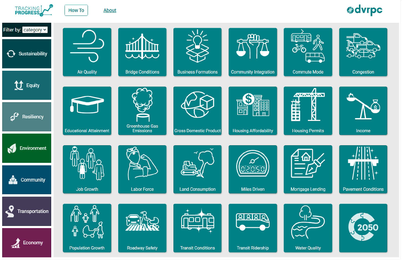
November 21, 2023
Connections 2050 sets a goal to increase the region’s mobility and reliability, while reducing congestion and vehicle miles traveled (VMT) by developing a safe, integrated, and accessible multimodal transportation network. Decreasing VMT can reduce a number of negative environmental impacts from transportation—air and noise pollution, greenhouse gas emissions—and lessen the demand to widen roads—which can increase stormwater runoff, fragment green space and wildlife habitat, and reinforce auto dependence.
106 million VMT were traveled on the region’s roads each day in 2022. This is a 4% decrease from 2021. In 2021, VMT rebounded to pre-pandemic levels following a sharp 18 percent decrease in 2020 at the outbreak of COVID-19. Prior to that, VMT stagnated coming out of the Great Recession before steadily increasing in the latter half of the 2010s, as the region experienced strong economic growth. On a per capita basis, VMT has decreased 6.5% from 19.3 miles traveled per day in the year 2000 to 18.0 in 2022. To see more VMT data at various regional geographies, go to the “How are we doing?” tab in the Miles Driven Indicator.
Since 2000, total personal vehicle ownership has increased by 14 percent on a per capita basis, from 0.56 per person to 0.64.
Tracking Progress also provides data and trends related to changes in VMT per vehicle, total personal vehicles available, and personal vehicles per capita. Reductions in vehicle ownership can help track how well the region’s multimodal transportation network is providing options for how to get around. Since 2000, total personal vehicle ownership has increased by 24 percent, or 730,000 vehicles, and has increased by 14 percent on a per capita basis, from 0.56 per person to 0.64. More work is necessary to expand transportation options that reduce the need to own a vehicle, which in turn will help to reduce travel costs, environmental impacts, and greenhouse gas emissions, in alignment with our Connections 2050 goals.
Want to download the data for your own use? Under each chart, find a link to the data in DVRPC’s Data Catalog. You can also explore other indicators in Tracking Progress, DVRPC’s interactive dashboard for exploring Greater Philadelphia’s progress toward the Connections 2050 regional Vision.